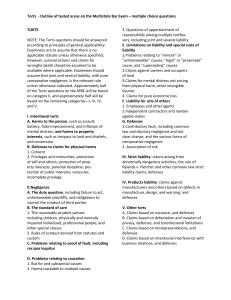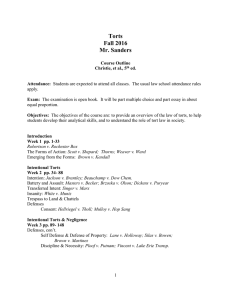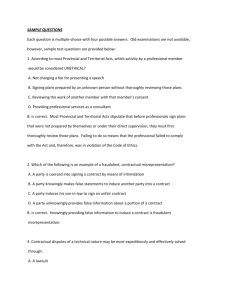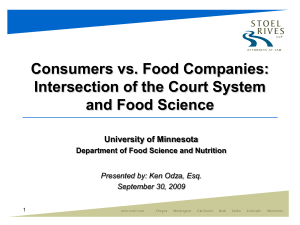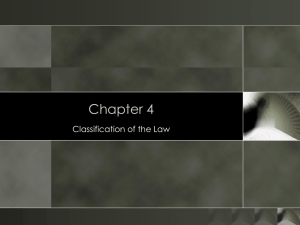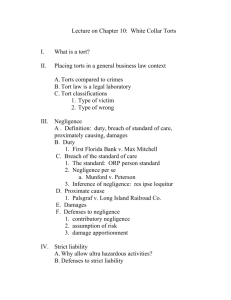Torts Question 1 - Stanford Law School
advertisement
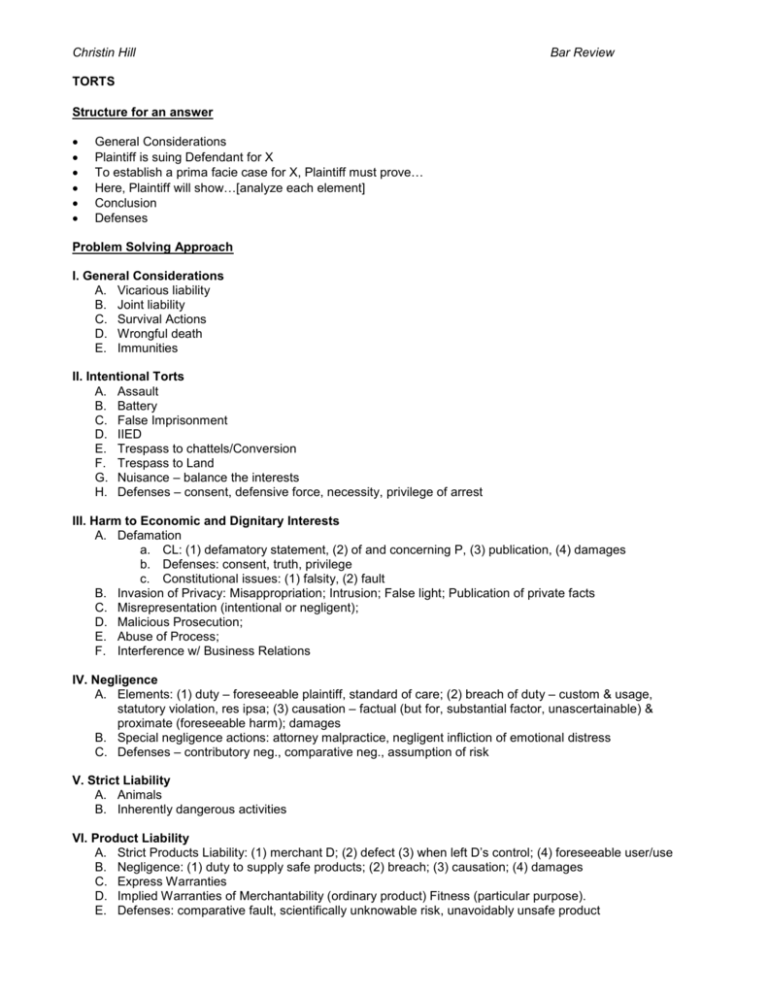
Christin Hill Bar Review TORTS Structure for an answer General Considerations Plaintiff is suing Defendant for X To establish a prima facie case for X, Plaintiff must prove… Here, Plaintiff will show…[analyze each element] Conclusion Defenses Problem Solving Approach I. General Considerations A. Vicarious liability B. Joint liability C. Survival Actions D. Wrongful death E. Immunities II. Intentional Torts A. Assault B. Battery C. False Imprisonment D. IIED E. Trespass to chattels/Conversion F. Trespass to Land G. Nuisance – balance the interests H. Defenses – consent, defensive force, necessity, privilege of arrest III. Harm to Economic and Dignitary Interests A. Defamation a. CL: (1) defamatory statement, (2) of and concerning P, (3) publication, (4) damages b. Defenses: consent, truth, privilege c. Constitutional issues: (1) falsity, (2) fault B. Invasion of Privacy: Misappropriation; Intrusion; False light; Publication of private facts C. Misrepresentation (intentional or negligent); D. Malicious Prosecution; E. Abuse of Process; F. Interference w/ Business Relations IV. Negligence A. Elements: (1) duty – foreseeable plaintiff, standard of care; (2) breach of duty – custom & usage, statutory violation, res ipsa; (3) causation – factual (but for, substantial factor, unascertainable) & proximate (foreseeable harm); damages B. Special negligence actions: attorney malpractice, negligent infliction of emotional distress C. Defenses – contributory neg., comparative neg., assumption of risk V. Strict Liability A. Animals B. Inherently dangerous activities VI. Product Liability A. Strict Products Liability: (1) merchant D; (2) defect (3) when left D’s control; (4) foreseeable user/use B. Negligence: (1) duty to supply safe products; (2) breach; (3) causation; (4) damages C. Express Warranties D. Implied Warranties of Merchantability (ordinary product) Fitness (particular purpose). E. Defenses: comparative fault, scientifically unknowable risk, unavoidably unsafe product

